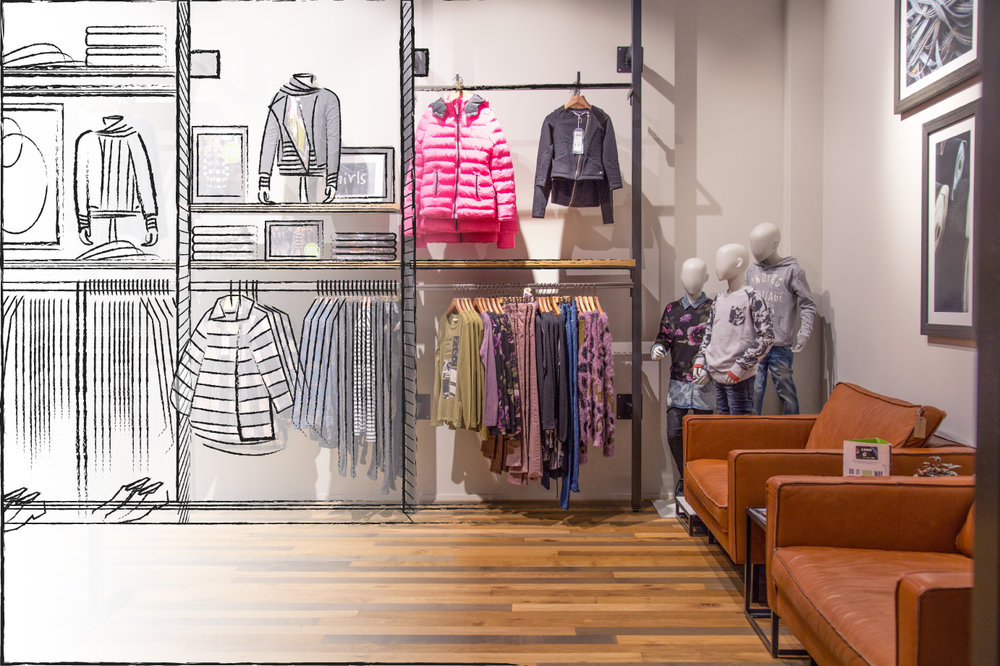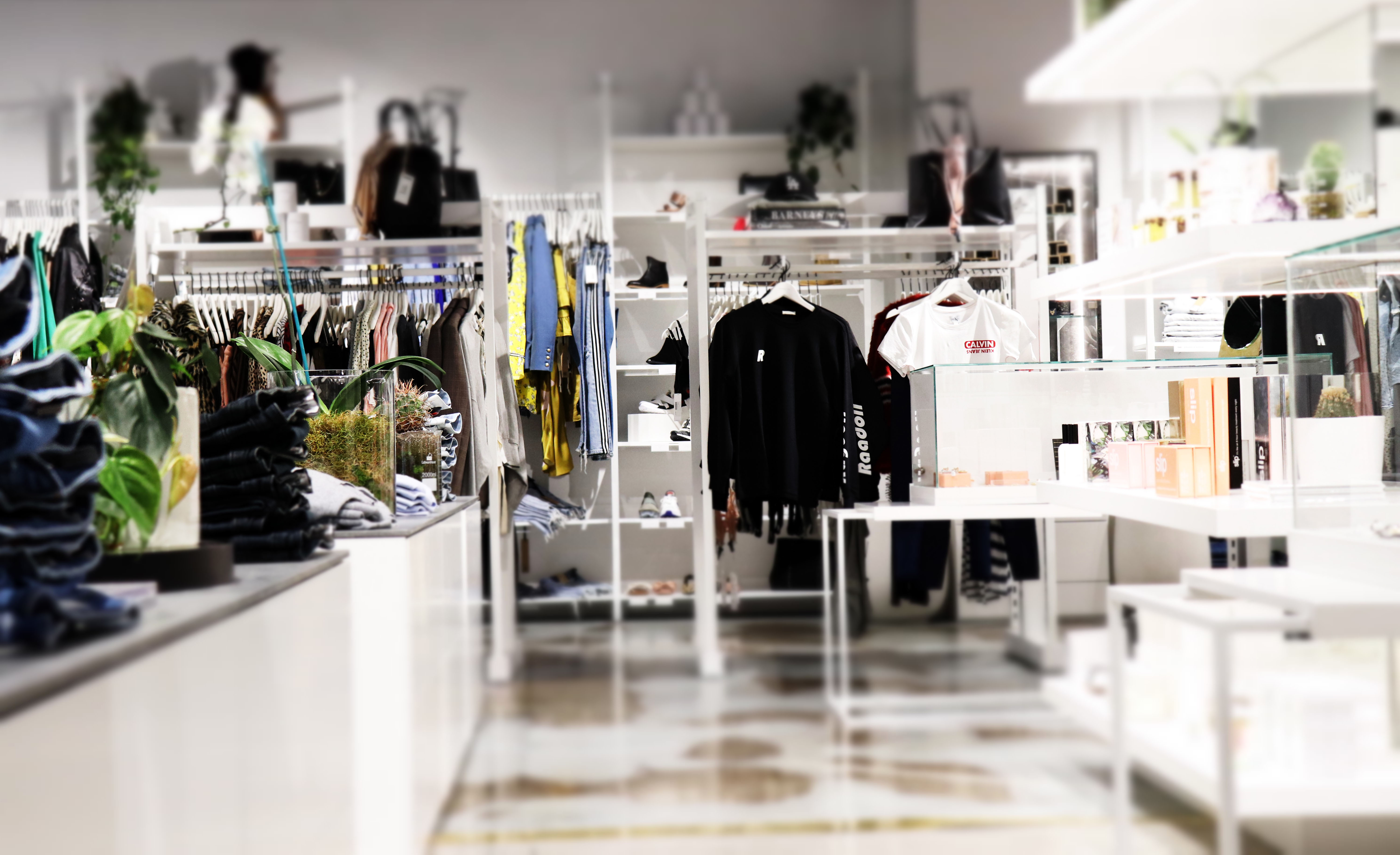Visual Merchandising For Apparel Stores: Crafting The Customer Experience
Visual Merchandising for Apparel Stores: Crafting the Customer Experience
Related Articles: Visual Merchandising for Apparel Stores: Crafting the Customer Experience
Introduction
With great pleasure, we will explore the intriguing topic related to Visual Merchandising for Apparel Stores: Crafting the Customer Experience. Let’s weave interesting information and offer fresh perspectives to the readers.
Table of Content
Visual Merchandising for Apparel Stores: Crafting the Customer Experience

In the dynamic world of retail, where competition is fierce and customer attention spans are fleeting, the ability to captivate and engage shoppers is paramount. This is where visual merchandising for apparel stores comes into play, serving as a silent salesperson that communicates a brand’s story and entices customers to explore its offerings.
Visual merchandising goes beyond merely displaying clothes; it involves strategically using visual elements to create an immersive and compelling shopping experience. It is an art form that combines design principles, psychology, and marketing expertise to influence customer behavior and drive sales.
The Power of Visual Storytelling
Imagine walking into a store and being greeted by a vibrant display showcasing a stylish ensemble, perfectly styled with accessories. The mannequins seem to exude confidence, their poses subtly suggesting a lifestyle that resonates with you. This is the power of visual merchandising. It transforms a simple act of shopping into a captivating experience, telling a story that resonates with the customer and inspires them to connect with the brand.
Key Elements of Effective Visual Merchandising
Effective visual merchandising for apparel stores encompasses a multitude of elements, each playing a crucial role in shaping the customer experience:
1. Window Displays: The storefront is the first point of contact with potential customers. A captivating window display acts as a silent ambassador, showcasing the brand’s personality and enticing passersby to step inside.
- Theme and Story: A well-defined theme, whether it be a seasonal celebration, a trend, or a specific collection, provides a clear narrative that draws customers in.
- Visual Hierarchy: The display should guide the eye, leading customers through the story with strategic placement of mannequins, props, and lighting.
- Lighting: Proper lighting enhances the visual appeal of merchandise, creating a desirable ambiance and highlighting textures and colors.
- Signage: Clear and concise signage communicates the theme and promotes key products, ensuring customers understand the message.
2. Interior Design and Layout: The store’s interior should reflect the brand’s identity and create a welcoming atmosphere.
- Color Scheme: Color palettes play a crucial role in creating a mood and influencing customer perceptions.
- Lighting: Appropriate lighting illuminates merchandise, highlighting textures and colors, and enhancing the overall shopping experience.
- Layout: The layout should be intuitive and easy to navigate, guiding customers through different product categories and encouraging exploration.
- Signage: Clear and consistent signage helps customers locate products and navigate the store effectively.
3. Merchandising Techniques: The way products are displayed is crucial to their appeal.
- Product Grouping: Grouping similar products together helps customers easily find what they are looking for and discover related items.
- Focal Points: Strategically placed mannequins or displays draw attention to key items or new arrivals.
- Visual Hierarchy: Items displayed at eye level are more likely to be noticed, while strategically placed accessories can enhance the overall appeal of a display.
- Color Blocking: Arranging merchandise by color creates a visually appealing and cohesive look.
4. Mannequins and Props: Mannequins and props play a crucial role in showcasing the brand’s style and communicating the desired look.
- Mannequin Selection: Mannequins should reflect the brand’s target audience and style, conveying the desired image and lifestyle.
- Posing and Styling: Mannequins should be posed in a way that highlights the garment’s features and conveys the desired look and feel.
- Props: Props, such as furniture, accessories, and plants, can add depth and context to the display, creating a more engaging and immersive experience.
5. Digital Integration: Integrating digital elements, such as interactive screens, digital signage, and social media integration, can enhance the customer experience and provide valuable information.
- Interactive Displays: Interactive screens can showcase product details, provide styling tips, and offer personalized recommendations.
- Digital Signage: Digital signage can display promotions, highlight new arrivals, and provide information about the brand.
- Social Media Integration: Encouraging customers to share their shopping experiences on social media can amplify the brand’s reach and generate buzz.
Benefits of Effective Visual Merchandising
The benefits of implementing effective visual merchandising strategies are far-reaching and contribute significantly to a store’s success:
- Increased Sales: Well-executed visual merchandising attracts customers, stimulates impulse purchases, and ultimately drives sales.
- Enhanced Brand Image: A cohesive and visually appealing store environment reinforces the brand’s identity and elevates its image in the minds of customers.
- Improved Customer Experience: A well-designed and engaging shopping experience enhances customer satisfaction and encourages repeat visits.
- Increased Foot Traffic: Captivating window displays and an inviting store environment draw customers in, increasing foot traffic and brand awareness.
- Enhanced Brand Loyalty: Creating a positive and memorable shopping experience fosters customer loyalty and encourages repeat business.
FAQs on Visual Merchandising for Apparel Stores
Q: What is the importance of window displays in visual merchandising?
A: Window displays are the first point of contact between a store and potential customers. They serve as a silent ambassador, showcasing the brand’s personality and enticing passersby to step inside. A captivating window display can draw attention, generate interest, and ultimately drive foot traffic into the store.
Q: How can I create a cohesive and visually appealing store environment?
A: Creating a cohesive and visually appealing store environment requires careful consideration of various elements, including color palettes, lighting, layout, signage, and merchandise displays. The goal is to create a space that reflects the brand’s identity, communicates a clear message, and provides a welcoming and engaging shopping experience.
Q: What are some effective merchandising techniques for apparel stores?
A: Effective merchandising techniques include grouping similar products together, creating focal points with mannequins or displays, utilizing visual hierarchy, and employing color blocking. These techniques help customers easily find what they are looking for, discover related items, and experience the brand’s style in a visually appealing way.
Q: How can I incorporate digital elements into my visual merchandising strategy?
A: Digital elements can significantly enhance the customer experience. Interactive screens can showcase product details, provide styling tips, and offer personalized recommendations. Digital signage can display promotions, highlight new arrivals, and provide information about the brand. Integrating social media can encourage customers to share their shopping experiences and amplify the brand’s reach.
Tips for Effective Visual Merchandising for Apparel Stores
- Know Your Target Audience: Understand your customer’s demographics, preferences, and shopping habits to create displays that resonate with them.
- Create a Clear Brand Identity: Develop a distinct brand identity that communicates your values, personality, and style.
- Stay Updated on Trends: Keep abreast of current fashion trends and incorporate them into your displays to maintain a fresh and relevant look.
- Experiment and Innovate: Don’t be afraid to experiment with different display techniques and incorporate innovative elements to stand out from the competition.
- Seek Professional Guidance: Consider consulting with a visual merchandising expert to optimize your displays and create a truly compelling shopping experience.
Conclusion
Visual merchandising is a powerful tool that can transform a simple shopping experience into a captivating journey. By strategically using visual elements, apparel stores can create a compelling narrative that resonates with customers, enhances brand image, and drives sales. By understanding the principles of visual merchandising and implementing effective strategies, retailers can unlock the full potential of their store environment and create an unforgettable experience for their customers.







Closure
Thus, we hope this article has provided valuable insights into Visual Merchandising for Apparel Stores: Crafting the Customer Experience. We thank you for taking the time to read this article. See you in our next article!
You may also like
Recent Posts
- Shaping The Homes Of Tomorrow: Home Decor Trends For 2025
- Navigating The Evolving Landscape Of Home Decor Trends: A Comprehensive Guide
- Weaving History And Home: A Guide To Unique Vintage Farmhouse Decor
- The Enduring Appeal Of Wooden Duck Home Decor: A Timeless Symbol Of Nature And Serenity
- Beyond The Ordinary: A Guide To Unique Home Decor Accessories
- Navigating The Fast Fashion Landscape: Exploring Alternatives To SHEIN
- A Global Network Of Home Improvement: The Reach Of The Home Depot
- Finding The Perfect Pieces: A Guide To Home Decor Shopping
Leave a Reply